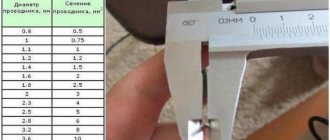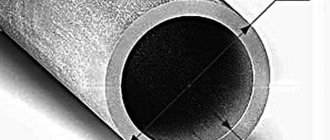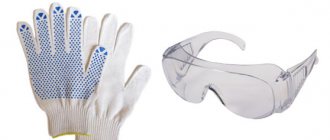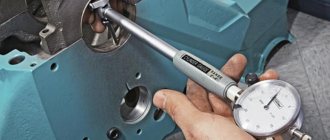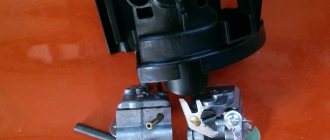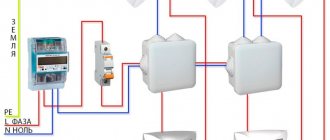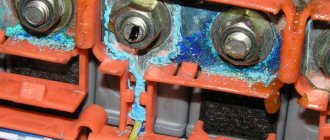Formula for surface area of a circular cylinder
S basic = 2 ⋅ π ⋅ r 2 S_{\text{basic}}=2\cdot\pi\cdot r^2 Sbas=2⋅π⋅r2
S side = 2 ⋅ π ⋅ r ⋅ h S_{\text{side}}=2\cdot\pi\cdot r\cdot h Sside=2⋅π⋅r⋅h
rrr is the radius of the circle (the base of a circular cylinder); hhh is the height of this cylinder.
In short, this formula can be written as follows:
S = S main + S side = 2 ⋅ π ⋅ r 2 + 2 ⋅ π ⋅ r ⋅ h = 2 ⋅ π ⋅ r ⋅ ( r + h ) S=S_{\text{main}}+S_{\text{ side}}=2\cdot\pi\cdot r^2+2\cdot\pi\cdot r\cdot h=2\cdot\pi\cdot r\cdot(r+h) S=Smain+Sside= 2⋅π⋅r2+2⋅π⋅r⋅h=2⋅π⋅r⋅(r+h)
Example
The radius of the circle lying at the base of a right circular cylinder has a length of 6 (cm). The height of the cylinder is 20 (cm). Find its total surface area.
Solution:
r = 6 r=6 r=6 h = 20 h=20 h=20
According to the formula:
S = 2 ⋅ π ⋅ r ⋅ ( r + h ) = 2 ⋅ π ⋅ 6 ⋅ ( 6 + 20 ) ≈ 979, 68 S=2\cdot\pi\cdot r\cdot(r+h)=2\cdot \pi\cdot 6\cdot(6+20)\approx979.68 S=2⋅π⋅r⋅(r+h)=2⋅π⋅6⋅(6+20)≈979.68 (see sq. )
Answer: 979.68 cm2
Application area
The circle is one of the fundamental figures that surround a person everywhere. Pipes, wheels, lamps, stove burners - all of this has the shape of a circle or a cross section in the form of a circle. Calculating the area of such a section may be necessary in the following situations:
- Determination of container volumes.
- Solving problems in strength of materials and electrical engineering.
- Calculation of the amount of materials during design, construction and repair.
- Conducting irrigated agriculture.
It is worth paying attention to the difference between a circle and a circle. A circle is a closed curve, all points of which are equally distant from the center, while a circle is a part of a plane (geometric figure) bounded by a circle.
The circle has a number of characteristics:
- radius (r/R) - a segment connecting the center of the figure with its border;
- diameter (d/D ) - a segment that connects two points on the border of a circle and passes through its center;
- circumference (C/c/L/l).
The theorem states: the area of a circle (S) is equal to the product of half the circumference and its radius. The circumference C is directly dependent on the radius R with a coefficient π (“pi” = 3.14).
Types of cylinder
The types of cylinder depend on the angle at which the generatrices and bases of our body intersect.
If the angle is 90 degrees, then we get the so-called straight cylinder . It has an axis of symmetry - this is a perpendicular connecting the centers of its bases.
If the angle is different, then the cylinder is called inclined .
If the shape of the base is a hyperbola, then the cylinder hyperbolic , if a parabola is parabolic , if an ellipse is elliptical , if a circle is circular .
If the bases of the cylinder are not parallel, then it is called oblique .
Formulas and calculator for calculating the volume of a cylinder using the diameter of the base
d - diameter of the cylinder base
h - cylinder height
...calculation...
...calculation...
...calculation...
...calculation...
Application area
The circle is one of the fundamental figures that surround a person everywhere. Pipes, wheels, lamps, stove burners - all of this has the shape of a circle or a cross section in the form of a circle. Calculating the area of such a section may be necessary in the following situations:
- Determination of container volumes.
- Solving problems in strength of materials and electrical engineering.
- Calculation of the amount of materials during design, construction and repair.
- Conducting irrigated agriculture.
It is worth paying attention to the difference between a circle and a circle. A circle is a closed curve, all points of which are equally distant from the center, while a circle is a part of a plane (geometric figure) bounded by a circle.
The circle has a number of characteristics:
- radius (r/R) - a segment connecting the center of the figure with its border;
- diameter (d/D ) - a segment that connects two points on the border of a circle and passes through its center;
- circumference (C/c/L/l).
The theorem states: the area of a circle (S) is equal to the product of half the circumference and its radius. The circumference C is directly dependent on the radius R with a coefficient π (“pi” = 3.14).
Stereometry. Sectional area through the projected area of the section.
If the cross-section has a complex shape, then you should not try to find its area “head-on”. A smart person will go around the mountain... And we will go around: we will determine the projection area of the section (usually this is very simple) and the angle of inclination of the section plane to the plane of the base. Then we will use the well-known formula. But more on this later.
Problem 1. In a rectangular parallelepiped with edges ‚ and the points and - are the midpoints of the edges and, respectively. The plane intersects the edge at point .
a) Prove that ;
b) Find the cross-sectional area of this parallelepiped by the plane.
Figure 1 – for task 1
Let's construct a section. Let's construct a straight line - after all, the points belong to the same face. Let's construct a straight line and find the point of intersection of the straight line and the straight line - point .
Figure 2 – for task 1
This point belongs to both the face plane and the face plane. Let's draw a straight line and determine the point of intersection of this line with the edge - point.
Figure 3 – for task 1
Let's construct lines along which the section “cuts” the edges of the parallelepiped: .
Figure 4 – for task 1
Now let's construct a line and determine the point of its intersection with the line - the point of intersection lies in the plane of the upper face, and this allows us to connect it with the point. Now let's find the intersection of the segment with the edge - point, and you can outline and hatch the section:
Figure 5 – for task 1
Let us prove point a). Consider triangles and . They are similar because they are formed by parallel lines: . Since , then the coefficient of similarity of these triangles is . Then . Since the triangles and are also similar with a coefficient, then. But triangles are equal according to the 2nd criterion, therefore, , or , that is, .
b) Determine the cross-sectional area. To do this, you can determine the projection area of this section, and the cosine of the angle between the plane and the base of the parallelepiped. First, let's find the projection area. Let's cut two triangles from the base of the parallelepiped, then the remainder is the projection area (the polygon is highlighted in blue).
Figure 6 – for task 1
The area of the base of the parallelepiped is 12, cut off the triangle: according to the condition, according to the proven relation from point a). Hence,
We cut off the triangle: according to the condition, according to the proven relation from point a). Hence,
Then the projection area is equal to
Now let’s find the angle of inclination of the section plane to the plane of the base, or rather, its cosine. You need to find the cosine of an angle - or any other trigonometric function - of an angle. Consider a triangle. It is rectangular, leg (equal to the height of the parallelepiped). The length of the segment can be found from the triangle:
According to previously proven,.
Then
The cross-sectional area is
Answer: .
Problem 2. In a regular quadrangular prism, the side of the base is equal to 6, and the side edge is equal to . On the edges and the points and are marked, respectively, and .
a) Let be the point of intersection of the plane with the edge. Prove that is a square;
b) Find the cross-sectional area of the prism by plane .
Figure 1 – for task 2
Let's draw a straight line and through a point - a straight line parallel to it, since the plane cuts the opposite faces of the parallelepiped (straight prism) along parallel straight lines:
Figure 2 – for task 2
Let's find the point of intersection of the line and - point. This point belongs to the plane of the face. Therefore, it can be connected to a point by a segment that intersects the edge at point . Let's find the point of intersection of the line and - point. This point belongs to the plane of the face. Therefore, it can be connected to a point by a segment that intersects the edge at point .
Figure 3 – for task 2
Figure 4 – for task 2
By connecting the points , , , , , , we obtain the desired section.
Let us prove that it is a square.
Figure 5 – for task 2
Since the segments and belong to the same plane (sectional plane) and at the same time parallel to the planes of the upper and lower bases of the prism, they are parallel. Also .
and – diagonals of straight regular prisms with base side 1 and height . Then
It turns out - at least a rhombus. And according to the principle of a parallelogram, since the opposite sides are equal in pairs, then it is a square.
b) Determine the cross-sectional area. To do this, you can determine the projection area of this section, and the cosine of the angle between the plane and the base of the parallelepiped. First, let's find the projection area. Let's cut two triangles from the base of the parallelepiped, then the remainder is the projection area (the polygon is highlighted in purple).
Figure 6 – for task 2
The area of the base of the prism is 36, cut off the triangle: according to the condition, according to the proven relation from point a). Hence,
We cut off the triangle: according to the condition, according to the proven relation from point a). Hence,
Then the projection area is equal to
Now let’s find the angle of inclination of the section plane to the plane of the base, or rather, its cosine. You need to find the cosine of an angle - or any other trigonometric function - of an angle. Consider a triangle. It is rectangular, leg (equal to the height of the parallelepiped). The length of the segment can be found from the triangle:
According to previously proven,.
Then
The cross-sectional area is
Answer: .
Formula for the surface area of an inclined circular cylinder
S basic = 2 ⋅ π ⋅ r 2 S_{\text{basic}}=2\cdot\pi\cdot r^2 Sbas=2⋅π⋅r2
S side = p ⋅ l S_{\text{side}}=p\cdot l S side=p⋅l
rrr is the radius of the circle (the base of a circular cylinder); ppp is the perimeter of the section of an inclined cylinder perpendicular to the generatrix; lll is the length of the generatrix of this cylinder.
Example
Find the surface area of an inclined cylinder if the perimeter ppp of the cross-section of the plane forming a right angle with the generatrix is equal to 30 (cm), and the generatrix itself is equal to 7 (cm). The radius of the circle underlying the cylinder is half the size of its generatrix.
Solution:
r = l 2 r=\frac{l}{2} r=2l p = 30 p=30 p=30 l = 7 l=7 l=7
Let's first find the radius of the base:
r = l 2 = 7 2 = 3.5 r=\frac{l}{2}=\frac{7}{2}=3.5 r=2l=27=3.5
Then the total area is:
S = S main + S side = 2 ⋅ π ⋅ r 2 + p ⋅ l = 2 ⋅ π ⋅ 3. 5 2 + 30 ⋅ 7 ≈ 76, 93 + 210 = 286, 93 S=S_{\text{main} }+S_{\text{side}}=2\cdot\pi\cdot r^2+p\cdot l=2\cdot\pi\cdot 3.5^2+30\cdot 7\approx76.93+210=286 .93 S=Smain+Sside=2⋅π⋅r2+p⋅l=2⋅π⋅3.52+30⋅7≈76.93+210=286.93 (cm. sq.)
Answer: 286.93 cm2
The Studentwork website provides custom test solutions for schoolchildren and students.
